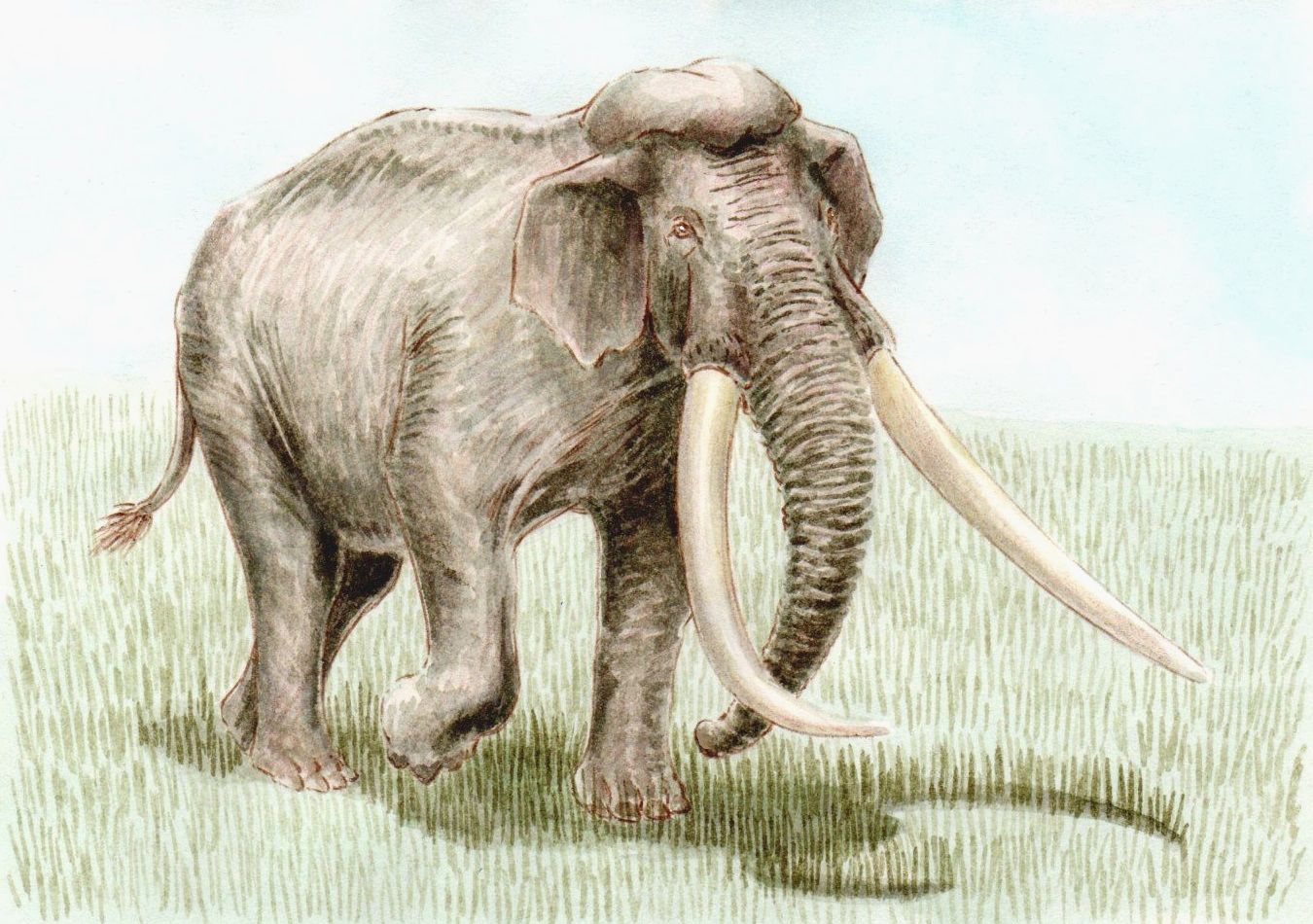|
Naumann's Elephant
''Palaeoloxodon naumanni'', occasionally called Naumann's elephant, is an extinct species belonging to the genus ''Palaeoloxodon'' found in the Japanese archipelago during the Middle to Late Pleistocene around 430,000 to 24,000 years ago. It is named after Heinrich Edmund Naumann who discovered the first fossils at Yokosuka, Kanagawa, Japan. Fossils attributed to ''P. naumanni'' are also known from China and Korea, though the status of these specimens are unresolved, with some authors regarding these as belonging to separate species. Description ''Palaeoloxodon naumanni,'' like other members of the genus ''Palaeoloxodon'' had a pair of long straight tusks and a parietal-occipital crest on the top of the head. These tusks grew more than 2.4 m in length, 20 cm in diameter. It was a little smaller than Asian elephants averaging to . It lived in forest which mixed subarctic conifers and cool-temperate deciduous trees. The ancestor of ''Palaeoloxodon naumanni'' moved from t ... [...More Info...] [...Related Items...] OR: [Wikipedia] [Google] [Baidu] |
Palaeoloxodon
''Palaeoloxodon'' is an extinct genus of elephant. The genus originated in Africa during the Pliocene era, and expanded into Eurasia during the Pleistocene era. The genus contains some of the largest known species of elephants, over four metres tall at the shoulders, including the European straight-tusked elephant (''Palaeoloxodon antiquus''), and the southern Asian ''Palaeoloxodon namadicus'', the latter of which was possibly the Largest land mammal, largest known land mammal based on fragmentary remains, but this requires proper reexamination. In contrast, the genus also contains many species of Dwarf elephant, dwarf elephants that evolved via insular dwarfism on islands in the Mediterranean, some only a metre in height, making them the smallest elephants known. The genus has a long and complex taxonomic history, and at various times, it has been considered to belong to ''Loxodonta'' or ''Elephas'', but today is usually considered a valid and separate genus in its own right. Tax ... [...More Info...] [...Related Items...] OR: [Wikipedia] [Google] [Baidu] |

